
14 minute read
Learn to Change the World
SUMMIT ON SEXUAL ASSAULT SEXUAL ASSAULT AND CONSENT AND CONSENT
At the end of November 2020, GDS hosted the ffth annual Summit on Sexual Assault and Consent, the largest to date and the only to be held exclusively online.
Advertisement
GDS student leaders, under the guidance of a team of GDS faculty and staff members, created 391 personal schedules for student, faculty, parent, administrator, and counselor attendees from across the country.
The conference offered nearly 70 different workshops over two days plus smaller cohort meetings, facilitated by GDS students, to continue connecting and sharing experiences throughout the weekend. The two dozen members of the Summit leadership team provided options for attendees to learn through historical, legal, and artistic lenses; invited attendees to consider athletics cultures or the places faith traditions collide with human dignity and basic feminist principles; and offered inspiration to carry back to their communities. Cheyenne Tyler Jacobs
I hope that everything you got out of today—whether that is new information, whether that is community, whether that is a new website and new Instagram page, whatever it may be—you use it, not only for your community but for yourself because at the end of the day, community healing starts right here, with who you are.”
Consent Summit Planning Team
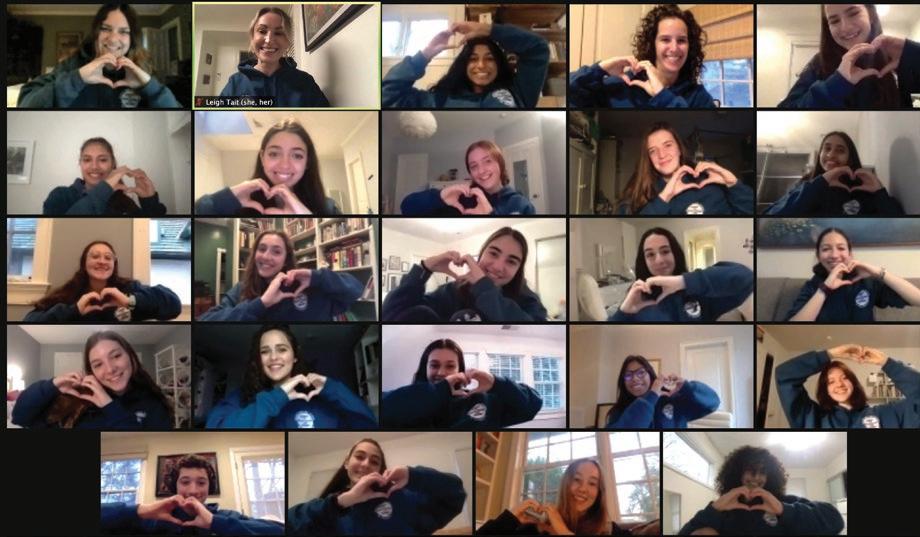
Renowned health educator Shafa Zaloom

WHAT WAS YOUR CONFERENCE HIGHLIGHT?
[The] passion, inspiration, and commitment [of the] phenomenal student leaders....I deeply appreciate all that you are doing to make our world a better place for all.”
From the opening welcome panel through to spoken- word poet Cheyenne Tyler Jacobs’s closing keynote, the Summit made clear that broad culture change is possible through intersectional, everyday advocacy. GDS is grateful to the work of the faculty and staff advisors and presenters Amy Killy, Bobby Asher, Campbell Keyser, Gaby Grebski, Guyton Mathews, Leigh Tait, and Meg Blitzshaw as well as the student leaders, especially our seniors in their fnal Consent Summit as GDS students.
NOT REALLY ABOUT ROBOTS
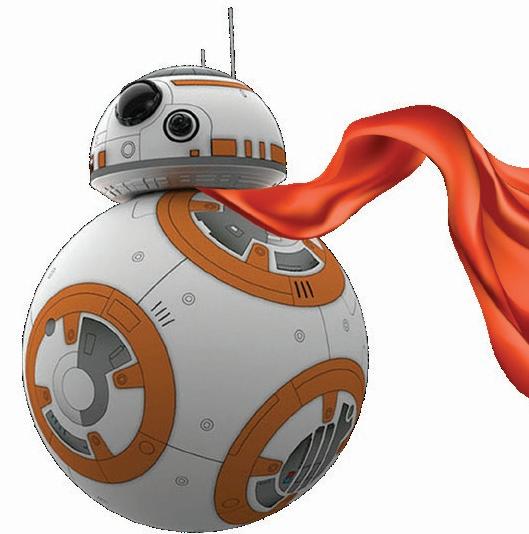
SOLUTION-SEEKERS, INNOVATORS, AND GLOBAL COLLABORATORS
This story is not really about robots.
Instead, it’s about how GDS students are changemakers—learning what matters, characterizing and quantifying it, and collaborating with others across disciplines to understand how they can change the world for the better. This story is about learning from past and current heroes, learning to do the most good, working with others, gaining new skills, and fnding joy in the journey.
Yes, it does also feature a few robots.
A REVOLUTION AND A PILGRIMAGE
In 2016, Klaus Schwab, founder and executive chairman of the World Economic Forum, described a “Fourth Industrial Revolution” unfolding around us at an exponential rate, disrupting nearly every industry and transforming the way we live and connect. He explained that the fusion of the technologies that emerged during the Third Industrial Revolution will continue to blur the divide between “the physical, digital, and biological spheres.” According to his view, emerging technologies in artifcial intelligence (AI), biotechnology, robotics, and more will infuence how changes take shape in our global economy and granularly in daily life. Accelerated by the COVID-19 pandemic, but driven broadly by diverse and disparate forces, this current revolution will usher unprecedented opportunities as well as enormous inequalities, and many agree.
At GDS, students have the opportunity to interrupt historical patterns and to question the inevitability of those inequalities, to design and advocate for forward-thinking policies, and to build a diverse coalition of changemakers committed to thriving communities and a healthier planet.
Students engage in that kind of innovative thinking across the divisions in classrooms and in clubs like the GDS High School robotics team. GDS parents Megan Smith (Alex ’23 and Louie ’20 Swisher), CEO of Shift7 and former chief technology offcer of the United States under President Obama, and Hayley Pivato (Matteo ’22 and Leo ’23) helped get the team off the ground in early 2019. Megan, who supports and communicates with changemakers around the world, explained the importance of refecting on innovators from history, especially highlighting hidden fgures, in order to inform our work today.
Megan took us on a historical refection journey that began in the First Industrial Revolution, where Mary Shelley’s Frankenstein grappled with how to wield the tremendous power of science and technology. At the same time, it is critical to consider the lesserknown legacy of her mother, Mary Wollstonecraft, who wrote A Vindication of the Rights of Woman, which posited that upending the educational access divide between men and women could usher in a new social order both in homes and in the workplace.
LUCASFILM
GDS’s studentled magazine Gxrls in STEM is doing just what Wollstonecraft propounded: it is focused on “breaking down gender barriers to empower all young womxn to pursue their passions in STEM felds,” cognizant of the “intersectional struggles many in our community face.” In a recent issue, contributors from GDS and around the world consider the impact of technology on mental health, advances in Alzheimer’s disease research, the impact of COVID-19 on sleep, and more. Co-founded by Avani Ahuja (GDS) and Layla Dawit (Sidwell Friends), the magazine features GDS contributors Eleanor Gaugh ’22, Celia Johnson ’21, Lucie Johnson ’23, Maya Landweber ’22, and Madeleine Popofsky ’22.
GDS ADVANCING
As we turn to the Second Industrial Revolution, the story of Jane Addams, the Chicago social justice pioneer who founded Hull House, a settlement house for newly arrived immigrants that drew upon collaboration within the neighborhood to best meet the needs of its residents, is essential to understanding how collaboration within and outside of traditional structures can effect change.
During that time, Ida B. Wells, who used data science and journalism to combat lynching, leveraged statistics and quantitative reporting to frame the discourse. Her data science also debunked the prevailing myth, perpetuated at least on one occasion by her contemporary Jane Addams, that White mobs only lynched Black men accused of criminal acts.
The High School Policy Institute is a present-day example of leveraging data, as students research immigration policies and advocacy efforts by community organizations in the Life Resettled track and housing, health, and income inequalities in the Waging Life in the DMV track. The other Policy Institute tracks—which work on sexual assault and consent and study environmental justice—also rely upon statistical data.
Toward the end of the year in 5th grade math, in conjunction with their yearlong Changemakers program, students used what they learned about statistical markers and graphing to present research around one of the social justice topics they worked on this year: pay equity, homelessness, food inequity, climate justice, immigration, or health care. The same students collaborated to conduct research on animal behavior, gathering as many guiding questions and wonderings as they could before starting their research and data collection. Up next, bridging into the Third Industrial Revolution, is the legacy of Mary Jackson, NASA’s frst Black woman engineer, who rose to the most senior technical levels with many contributions and then turned her attention to infuence hiring practices and promote women and people of color in STEM through NASA’s equal opportunity and affrmative action offces. Another pioneer lending inspiration to GDS students is Nichelle Nichols, who played Lieutenant Uhura on Star Trek and whose presence on the show, according to Martin Luther King Jr., was as critical to the representation of African Americans (and women) in American society as the protests and marches he was leading.
Science teacher Jon Venegas watches Perseverance approach Mars. its fnal descent onto the surface. Sixth grade students also dove headlong into their annual robotics study, this year designing probes of their own to test surface conditions on Mars. They learned block coding basics and how to confgure sensors, all while designing landers with individual personality— some wavy and Medusa-like, while others were bold, boxy, and played long Morse-code messages of peace.
Understanding the importance of seeing representation on the screen and in places of learning, teachers have posted along the hallways and stairwells of GDS images and biographies of BIPOC and women scientists and innovators, who students have been learning about in Lower School and who they mention as inspiration for ideas of their own that they are exploring.
UHURA.COM
Mary Jackson
NASA Nichelle Nichols
The excitement of space exploration continued at GDS as NASA’s Perseverance headed for—and later successfully landed on—Mars! Middle School students joined their teachers for a Perseverance watch party as it made
FIND ONE THING AND GET STARTED
Even back at the cusp of the Second Industrial Revolution, the groundwork was being laid for some of the big breakthroughs anticipated in this Fourth Industrial Revolution. Ada Lovelace “wrote about our future even as Darwin wrote about our origins,” parent Megan Smith explained.
Lovelace founded the future code revolution with her 1843 publication introducing the concept of algorithms and writing humanity’s frst step-bystep instructions for how a machine could calculate a sequence of Bernoulli numbers. She wished to unlock the math to the human cerebrum and established the concept of AI for future generations to engineer. Lovelace lent her mathematical genius to a collaboration with mathematician Charles Babbage on his “Analytical Engine,” ultimately extending the device’s conceptual computing capacity far beyond basic calculations.
One of the GDS Middle School’s new enrichment programs stands
on Lovelace’s shoulders in its determination to support passionate pursuit of innovative ideas. Modeled after the “Genius Hour” (one-hour blocks of passionate innovation), the “Hopper 45” club launched in winter 2021 to invite students’ pursuit of a single fascination, interest, or inquiry. The process- and passion-driven innovation space—dubbed “Hopper 45” after our founding year (and that it runs three-quarters of an hour)—gave students the chance to showcase their pursuits, including a language-learning program, a confetti cake baking exploration, a study of sharks’ teeth, basketball shoe branding, and edible slime (no, thank you!).
Our story belongs to the future that young people like Gitanjali Rao, TIME’s frst Kid of the Year, are emerging into. She mentors a “community of innovators” working to change the world in ways big and small and has personally developed innovations to tackle global issues, including contaminated drinking water and cyberbullying. “I think more than anything right now, we just need to fnd that one thing we’re passionate about and solve it,” Rao told Angelina Jolie in the TIME’s interview. “Even
GDS middle school students put their Mars probes through their paces. if it’s something as small as, I want to fnd an easy way to pick up litter. Everything makes a difference. Don’t feel pressured to come up with something big.”


Like Rao, students in Lower School science studied pollution in waterways (several students expressed particular concern about the well-being of sea turtles). Second graders delved into our Tenleytown neighborhood to learn more about the ways contaminated stormwater reaches our waterways. Then, even before learning about how others have sought solutions to similar problems, our youngest Hoppers prototyped their own pollution solutions either to remove existing contaminants or prevent them from reaching a waterway—using recycled materials.
ROLLING INTO THE FUTURE
Now we move through this transition into the Fourth Industrial Revolution. More than 30 students are already busy learning for the future, innovating as part of GDS’s High School FIRST Robotics team. The competition team of approximately two dozen students presented their work to the competition judges, representing GDS well.
Run like a sports season, teams around the world kick into gear with their innovation challenge solutions and robots at the start of the new year. They invent in collaboration and build to specifcations in just a few weeks. What a way to learn to steer a product from concept to showcase under a deadline! Time and again students on the team talk about the skills they are developing, the collaboration, the community camaraderie; there is far less talk about robots than one might think—so much so that you’d think the Robotics Team is not really about robots. You’d be right.
Aliza Lubitz ’21, club co-head with Julian Cunningham ’21, said, “My favorite part of robotics during the 2020–21 build season was being able to foster new connections with a diverse group of GDS students in every grade at the High School. Because our school community is gathering in a virtual environment this year, it is diffcult to get to know the new 9th grade class. For me, leading the robotics team (especially in the fall) was a way of welcoming freshmen and letting them know that we seniors are there for them! Learning how to attract new members, organizing time-effcient meetings, and working to create a sense of community among our team members was an exciting undertaking.”
In fact, the format of robotics competitions demands innovative collaboration: three teams are pitted

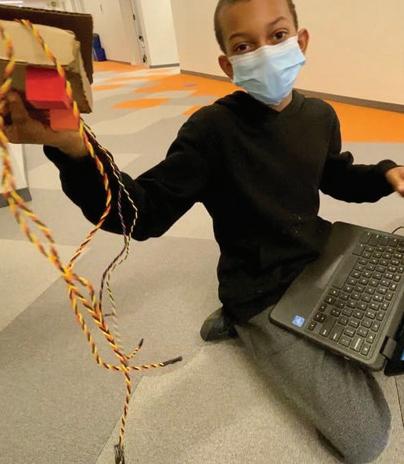
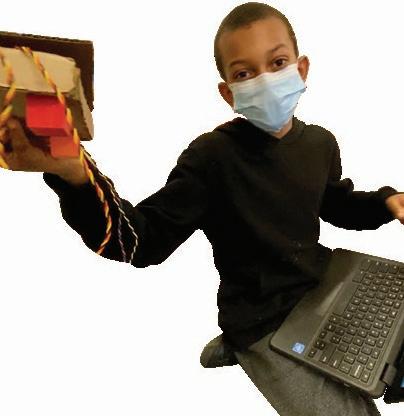
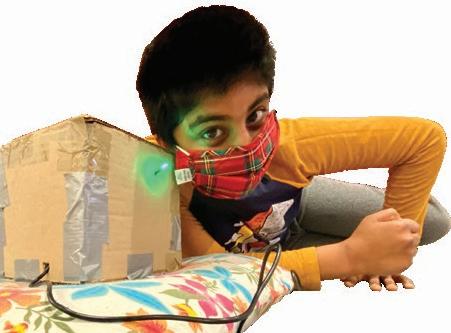
against another three teams, groups that are remixed throughout the competition. Helping teammates in each successive group is essential. The most successful FIRST Robotics team must address the challenges of bias that will emerge and fnd effective ways to move forward together. GDS’s team has focused on how its members engage as a team and how to form solution-oriented alliances in real time.
The notion of disparate teams aligning around a common cause is powerful and not new. One need look no further than the results of the global vaccine development effort that delivered highly effective vaccines many times faster than had ever been done before.
In fact, the competition’s most prestigious award, the FIRST Robotics Chairman’s Award, acknowledges teams who are helping. This award goes to the team that is “transforming the culture in ways that will inspire greater levels of respect and honor for science and technology, as well as encouraging more of today’s youth to become science and technology leaders.”
Mia Chévere ’23 and Ian Rothfeld ’23, co-leads of the “Infnite Recharge @ Home” subgroup, said, “All of our team members have contributed so much time and energy to this project, so seeing it come together was not only extremely satisfying but also encouraging, as we learned what we are capable of as a team.” Students met virtually and coached each other through learning new software—such as computer-aided design and drafting (CADD)—to model their devices. The hard work and collaboration of the Infnite Recharge @ Home subgroup earned them FIRST Robotics’ Rookie Game Changers award, which celebrates a rookie team’s outstanding success in a season. “We are trying to let all students know how the Robotics Team is about not just robot building, but team building, problem-solving with real-world issues, integrative technologies, and innovation, as well design, marketing, and business aspects that can be applied to any feld,” explained Matteo Pivato ’22, one of the founding members of the two-year-old GDS team.
This year’s FIRST Robotics competition included an innovation challenge to meet the physical and/or mental health needs of a far more sedentary 2020 global population. The competition website states, “Identify a problem or opportunity and design a solution to help people (or a community) keep, regain, or achieve optimum physical and/or mental health and ftness through active play or movement.” GDS students designed augmented reality glasses with ftness apps to add community support and gamify working out.
LMS innovation teacher and one of the team coaches Elvin Peprah said, “The future of innovation and makercentered learning at this school is growing. As it grows, we are looking at how our kids can take their coding skills in 2nd grade, 3D-printing skills in 5th grade, construction skills in 6th grade, and advanced Python skills in High School and direct them all toward something real-world focused. The students in FIRST Robotics are building autonomous and controlled robots and navigating rigorous courses, [and they are also] creating business plans, pitches, and designs for new games and innovative products. FIRST Robotics is one great way to get students to lead.”
Team coach Matthew Bachiochi echoed Elvin’s excitement: “I will say the thing that I’m most excited about is that we have a very young team that is eager to learn. Over the course of this virtual season, we’ve really tried to build student leadership, which will help us to build the program in the years to come.”
Matthew’s work at the High School hasn’t yet afforded him the lens to the lower grades that Elvin enjoys—and what he says is perhaps more true than he realizes. Even the youngest GDS students are brainstorming, collaborating, seeking solutions to problems they observe or learn about, and helping each other make a positive impact.
The school, founded upon a commitment to social justice, is advancing to lead with a public purpose. From the youngest grades, students develop the ability to innovate and create, build networks across difference, engage ethically, communicate clearly and powerfully, take risks, think critically, learn actively, advocate, and tackle problems. Science, technology, engineering, art, and mathematics (STEAM) reside at the intersection of these student capacities. It’s where students fnd joy in learning and learn together to change the world.
And that’s what this is really all about.
Special thanks to GDS parents Megan Smith and Hayley Pivato (Matteo ’22 and Leo ’23) for their contributions to this article and their enthusiastic support of the FIRST Robotics Team. To the many pioneering students stepping into the future with us, thank you for your compassion, creativity, and courage.









